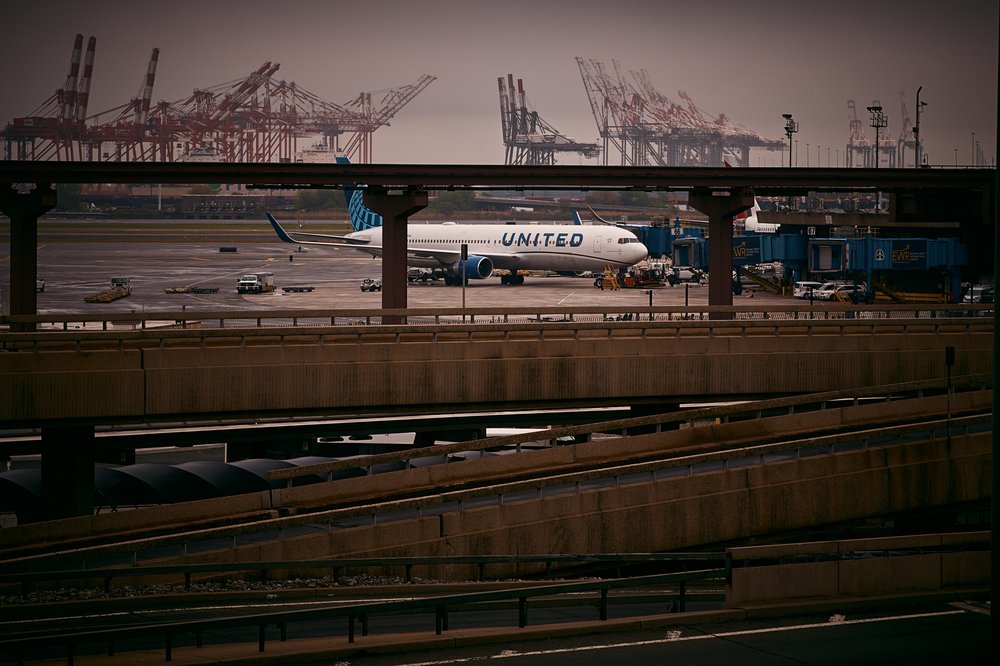Managing flights at Newark is so bad that air traffic controllers go on trauma leave
May 6, 2025, 4:16 p.m.
Controllers were traumatized by an episode last week where they lost radio and radar contact with pilots for 90 seconds.

Managing flights at Newark Liberty International Airport has gotten so bad that some air traffic controllers have gone on trauma leave, the national air traffic controllers union and Federal Aviation Administration said, amid mounting calls to urgently address technical problems causing rampant delays and cancellations.
More than 400 flights in and out of the airport were either delayed or canceled Monday morning. On Tuesday, more than 370 flights were delayed or canceled as of Tuesday afternoon, according to air traffic data. Federal transportation officials blamed staffing shortages and inclement weather for the travel misery.
Those shortages were due, at least in part, to an episode last week that officials said left some air traffic controllers so shaken that they went on leave. On April 28, air traffic controllers overseeing Newark airspace from the Philadelphia-based control center lost radar and radio communications with aircrafts for around 90 seconds. Flights went into a holding pattern and the worst-case scenario was averted – but the experience still took a toll, officials said.
“Due to the event, the controllers took absence under the Federal Employees Compensation Act. This program covers all federal employees that are physically injured or experience a traumatic event on the job,” National Air Traffic Controllers Association spokesperson Galen Munroe said in a statement. “The dedicated, American, hardworking employees who serve as controllers are the foundation of our air traffic control system.”
The Wall Street Journal reported Monday on some of the communications between an air traffic controller and the pilot of a Newark-bound United Airlines Newark from Charleston, South Carolina after the technology was restored but still experiencing problems.
“We don’t have a radar, so I don’t know where you are,” the controller reportedly said, telling the pilot to be on the lookout for other airplanes.
The potentially disastrous incident has added more urgency to demands for the federal transportation department to address the antiquated air traffic control technology. Officials say the vulnerable equipment is fueling delays and overwhelming the thin ranks of air traffic controllers.
United Airlines announced it was “unilaterally” canceling 35 round-trip flights a day out of the airport due to air traffic personnel shortages starting last weekend.
Congressional Democrats have blamed President Donald Trump for exacerbating the crisis by firing about 400 FAA staff members. (Air traffic controllers have been exempted from Trump’s cuts to employees of the federal government.)
On Tuesday, Sen. Chuck Schumer said on the Senate floor that President Donald Trump’s FAA “has failed spectacularly” in regard to safety.
Gov. Phil Murphy sent U.S. Transportation Secretary Sean Duffy a letter urging him to prioritize New York and New Jersey for airport funding.
“Decades of underinvestment in the maintenance of critical air traffic control infrastructure, delays in upgrading to modern 21st century air traffic control technology, and inadequate air traffic control staffing have resulted in a frail system nationwide,” Murphy wrote.
Still, Murphy praised Duffy for his plan to hire thousands of more air traffic controllers.
Duffy has blamed the Biden administration for not doing more to address the air traffic control system.
“They knew the air traffic control system was strained AND STILL DID NOTHING!” Duffy wrote on X Tuesday.
While calling for the FAA’s Office of the Inspector General to investigate the problems, Schumer acknowledged they preceded the second Trump administration.
“The FAA is a total mess right now,” he said in a statement, adding that he worries the problems plaguing Newark could become more widespread at airports around the country.
United cuts 35 flights out of Newark as staffing, technical problems cause hours-long delays